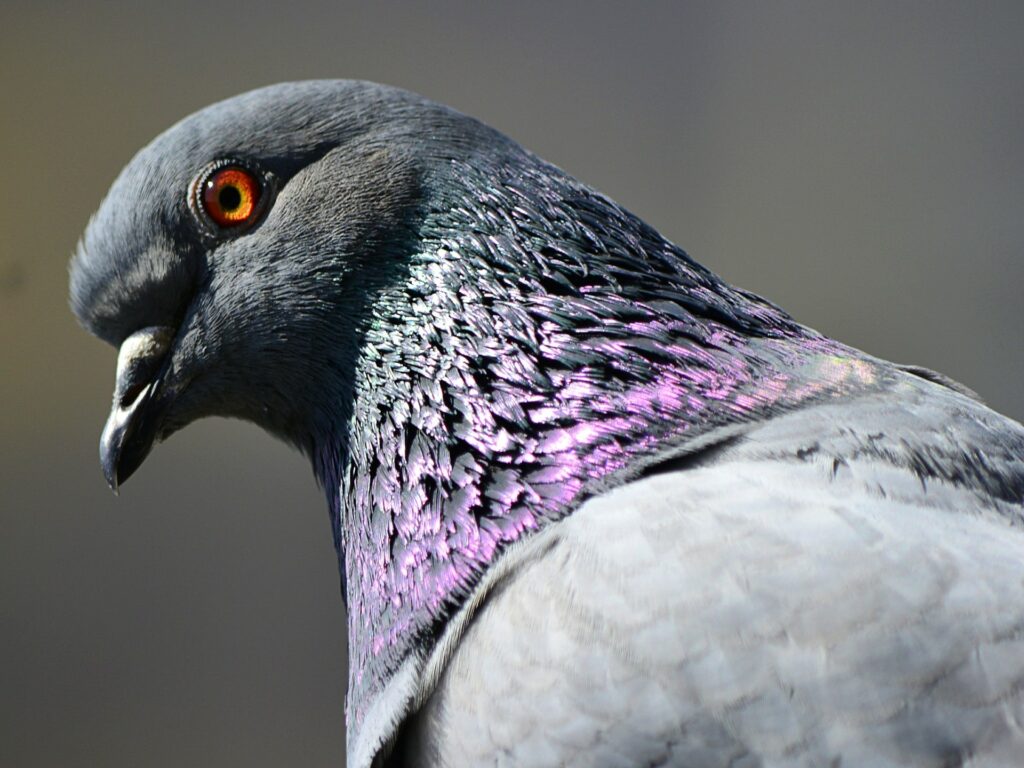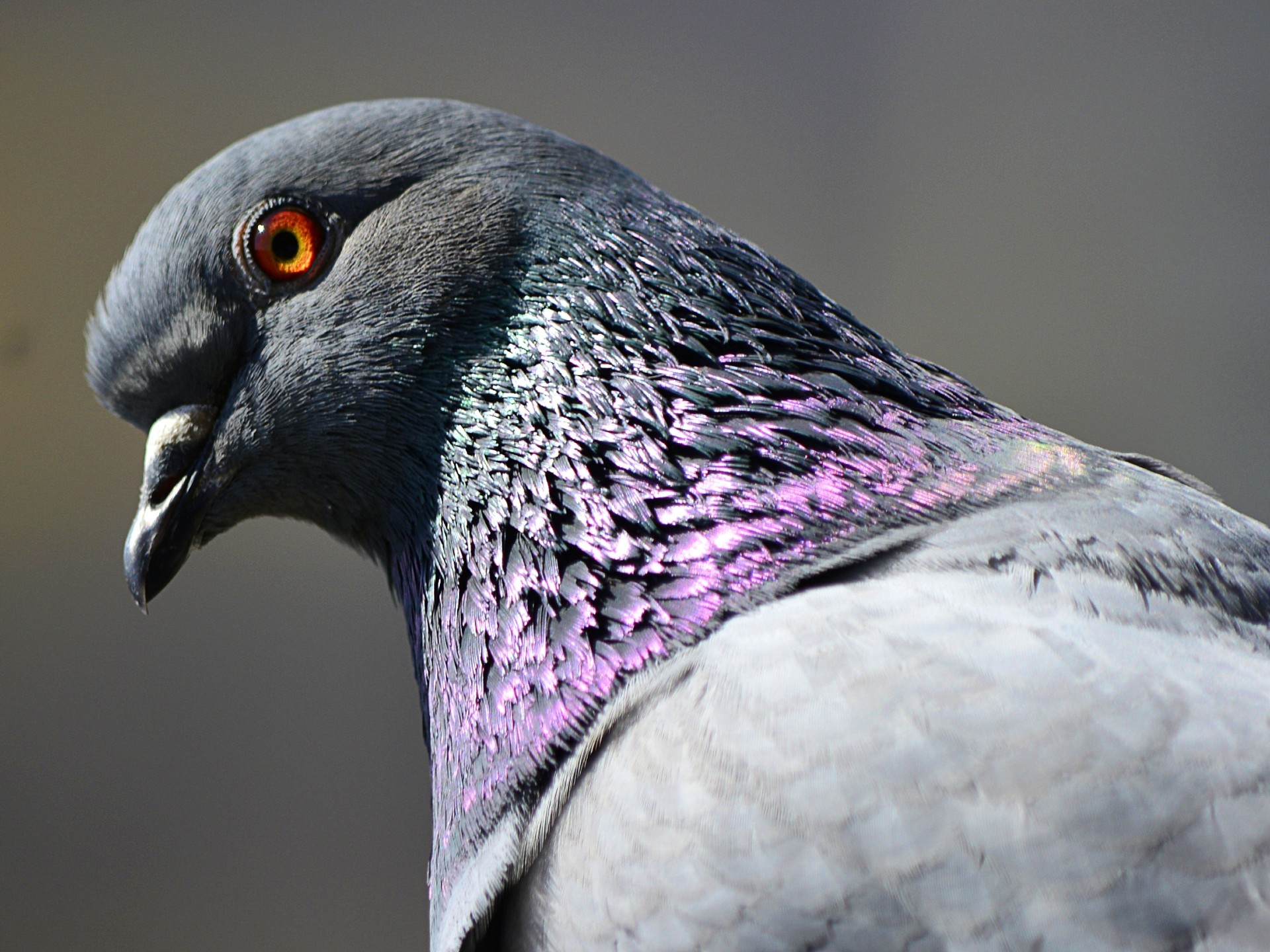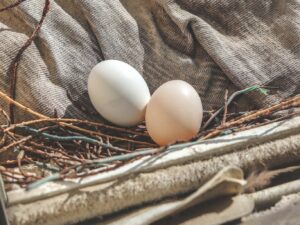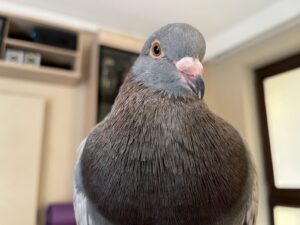If you’ve ever spent time around pigeons, you may have noticed that it can be difficult to tell the difference between male and female birds.
While there are a few physical characteristics that may help you determine the gender of a pigeon, it’s not always easy to tell.
In this article, I’ll explore some of the ways to tell if a pigeon is male or female. Whether you’re a pigeon enthusiast or just want to learn more about these fascinating birds, knowing how to determine pigeon gender can be a useful skill.
So, if you’re wondering how to tell if a pigeon is male or female, read on to learn more!
JUMP TO:

Physical features of a female and male pigeon
Some experienced pigeon breeders may be able to tell the difference between male and female pigeons based on their physical characteristics alone, but for those who are less familiar with the species, it can be more challenging.
Here are a few physical characteristics to look for when determining pigeon gender:
- Tail feathers: Male pigeons may have longer and more colorful tail feathers than females. This is often most noticeable during the breeding season, when male pigeons are trying to attract a mate.
- Head and beak: The head and beak of male pigeons may be slightly larger and more prominent than those of females. This is a subtle difference and may be difficult to notice unless you are able to observe the birds up close.
- Size and typical body weight: Male pigeons may be slightly larger than females, but this difference is often subtle and may not be noticeable unless you have both males and females side by side for comparison.
- Anal vents: One specific difference between male and female pigeons is the size of the anal vent, which is the opening located within the vent that is used for excreting feces. Male pigeons tend to have a larger anal vent compared to female pigeons. This difference in size is due to the presence of the male’s copulatory organ, known as the cloaca, which protrudes from the vent during reproduction. While these physical characteristics can be helpful in determining pigeon gender, it is important to note that they are not always reliable.
- Upright posture: In general, male pigeons tend to have a more upright posture compared to female pigeons. This difference in posture is due to the male pigeon’s larger size and more prominent breast muscles, which give it a more upright and proud appearance.
- More rounded head: In general, male pigeons tend to have more rounded heads compared to female pigeons, which tend to have more oval-shaped heads. This difference in head shape is due to the presence of a small fleshy protuberance called a cere located above the beak.As a result, it is often necessary to use a combination of physical characteristics and other methods to accurately determine the sex of a pigeon.
Check these articles as well:
Male and female pigeon differences in behavior
Observing the behavior of a pigeon can be a helpful way to determine its sex.

How do male pigeons behave?
- Male pigeons are often more territorial and may display aggressive behavior towards other birds or humans that they perceive as threats. They may also engage in courtship behavior, such as cooing or bowing, in an effort to attract a mate. Male coos are often louder and more frequent than those of females, and males tend to be more vocal in general.
How do female pigeons behave?
- Female pigeons, on the other hand, may be more focused on nesting and caring for eggs or chicks. They may spend more time at the nest and be less vocal than males. However, it is important to note that individual pigeons may exhibit behaviors that are more typical of the opposite sex, and it is not uncommon for male and female pigeons to share nesting and parenting responsibilities.
In addition to these behaviors, there are a few other characteristics to look for when determining pigeon gender based on behavior:
- Aggressive behavior: Male pigeons may be more likely to exhibit aggressive behavior towards other birds or humans that they perceive as threats. This can include puffing up their feathers, flapping their wings, or making loud noises.
- Males coo more: Male pigeons are often more vocal than females and may make a distinctive cooing sound to attract a mate. These coos are often louder and more frequent than those of females.
- Nesting behavior: Female pigeons may spend more time at the nest and be less vocal than males. They may also be more focused on caring for eggs or chicks, while males may be more interested in defending the nest from potential threats.
While observing behavior can be a useful way to determine pigeon gender, it is important to consider other factors as well.
Some individual pigeons may exhibit behaviors that are atypical for their sex, and it is not always possible to observe behavior in all cases.
As a result, it is often necessary to use a combination of physical characteristics and behavior to accurately determine the sex of a pigeon.
Check this: How Often Do Pigeons Poop?
Do you have a male or female pigeon? DNA testing gives 100% accuracy
DNA testing is a laboratory-based method that involves analyzing an individual’s DNA to determine their characteristics or traits.
In the context of determining the sex of a pigeon, DNA testing involves analyzing a sample of the pigeon’s DNA to identify the presence or absence of certain genetic markers that are indicative of the pigeon’s sex.
There are several methods mentioned for collecting and analyzing DNA samples in order to determine the sex of a pigeon.
- One method involves collecting a small sample of feathers from the pigeon and sending them to a laboratory for DNA analysis. This method is non-invasive and relatively easy to perform, as it only requires the collection of a small number of feathers.
- Another method involves collecting a small sample of blood or tissue from the pigeon and sending it to a laboratory for DNA analysis. This method is slightly more invasive than collecting feathers, as it requires the collection of a blood or tissue sample. However, it is still a relatively simple and straightforward process that can be performed by trained professionals.
Regardless of the method used, DNA testing is a reliable and accurate way to determine the sex of a pigeon.
It is important to note, however, that DNA testing may be more expensive and time-consuming compared to other methods of sex determination. It may also require specialized equipment and trained professionals to perform the analysis.
Only female pigeons lay eggs
Another definitive way to tell that a pigeon is female is if it lays eggs.
In order to determine the sex of a pigeon using this method, it is necessary to observe the pigeon’s behavior and look for signs that it is laying eggs.
If you are raising pigeons and want to know the sex of an individual bird, you can set up a nest box and observe whether the pigeon is spending time inside the box and laying eggs.
- It is important to note that only female pigeons lay eggs, so if you observe a pigeon laying eggs, you can be confident that it is a female.
- This is a reliable method for determining the sex of a pigeon, but it may not always be possible to observe this behavior, especially if the pigeon is not a pet or if it is not breeding season.
In cases where it is not possible to observe the pigeon’s egg-laying behavior, there are other methods that can be used to determine whether a pigeon is male or female like the ones mentioned above.
How do I know that my pigeon is male?
Based on the behavior and physical characteristics of my pigeon, I am confident that he is male.

- He is aggressive towards everyone except for me, which is a common behavior among male pigeons.
- He also coos a lot, which is a vocalization typically made by male pigeons as a means of attracting a mate. Additionally, he tries to dominate other birds and does not lay eggs, which are both behaviors typically exhibited by male pigeons.
- His large size also supports the conclusion that he is male, as male pigeons tend to be larger than female pigeons.
While I have not conducted any DNA tests to confirm his sex, I am confident that my pigeon is male based on his behavior and physical characteristics.
You will like these other articles about pigeons:




